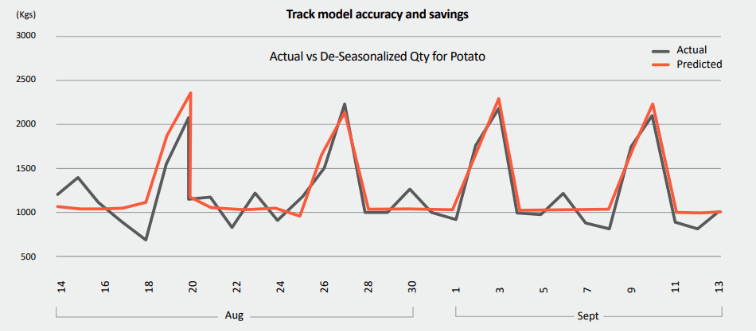key highlights
- Businesses used data for analysis (past) but now want predictions (future).
- models analyze data to anticipate issues and optimize operations.
- Challenges include data quality, technology, and skilled talent.
- Combining past & future insights drives better decisions, agility, and improvement.
There’s a growing need for businesses to bridge the gap between data analysis and real-world action. While sophisticated data warehouses store a wealth of information, translating that data into actionable strategies for sales, marketing, and support teams often remains a hurdle. This bottleneck arises from the lack of seamless integrations between data warehouses and the tools these crucial teams rely on daily. Traditionally, building the necessary connections falls upon engineers, consuming their valuable time and delaying critical tasks like revenue-generating feature development. Worse, these haphazardly built integrations often lack the robustness and flexibility needed to adapt to evolving business needs. This frustrating scenario points to a significant market gap: empowering business-oriented teams to directly access and utilize data from the warehouse, without relying on scarce engineering resources. Enter operational analytics.
Operational analytics focuses on using data analysis to fuel real-time operational workflows and inform immediate business decisions, rather than simply reviewing past performance after the fact. This philosophy demands seamless connections between data sources and operational tools, allowing sales and marketing teams to proactively adapt their strategies based on current and predicted customer behavior. However, in recent years, operational analytics has undergone a shift from descriptive to predictive formats. Keep reading to learn how.
Descriptive operational analytics: Understanding the past to inform the present
At its core, operational analytics encompasses two distinct yet complementary approaches: descriptive and predictive analytics. Descriptive analytics, as the name suggests, focuses on historical data. It dissects past performance, revealing trends, patterns, and anomalies. Think monthly sales reports, website traffic trends, or machine maintenance logs. These insights enable businesses to:
- Track performance: Monitor key performance indicators (KPIs) like production output, customer satisfaction, and delivery times.
- Identify areas for improvement: Analyze historical data to pinpoint bottlenecks, inefficiencies, and potential problems.
- Benchmark performance: Compare current performance against past benchmarks or industry averages.
However, relying solely on descriptive analytics has limitations. While it shines a light on what happened, it lacks the predictive power to answer the crucial question: what will happen?
Predictive operational analytics: Glimpsing into the future for proactive actions
This is where predictive analytics steps in. By harnessing the power of machine learning and statistical models, it analyzes historical data and current trends to forecast future outcomes. For example, predictive models can:
- Anticipate machine failures: Analyze sensor data to predict equipment breakdowns and schedule preventive maintenance.
- Optimize inventory management: Forecast demand and adjust inventory levels to avoid stockouts or overstocking.
- Predict customer churn: Identify customers at risk of leaving and implement targeted retention strategies.
Challenges in implementing predictive operational analytics in operations
While the potential of predictive operational analytics is undeniable, its smooth implementation presents several challenges that need to be addressed.
Data quality and availability
The bedrock of accurate predictive models is high-quality, readily available data. However, many organizations struggle with information residing in isolated systems, hindering its centralized analysis. This fragmented landscape impedes the model’s ability to capture the complete picture. Furthermore, inconsistent data formats, missing values, and inaccuracies within the data itself can significantly skew model predictions. Constant data cleansing and validation become crucial. For startups or businesses with limited operational history, the lack of historical data can pose an initial hurdle in building robust predictive models.
Technological infrastructure
Predictive analytics demands a robust technological infrastructure to handle the complex calculations and data processing involved. This can present challenges for older or less-equipped systems struggling to deliver the necessary processing power for advanced algorithms. Upgrading hardware and migrating to cloud-based solutions might be necessary. Integrating predictive models with operational systems for real-time data analysis and feedback can be technically demanding. Additionally, maintaining and training predictive models necessitates ongoing commitment, as they are not static and need regular updates to adapt to evolving data patterns.
Skill gaps
Leveraging predictive analytics effectively requires a specialized skill set not readily available in all organizations. The demand for data scientists and skilled professionals proficient in machine learning and predictive modeling far exceeds the current supply, making recruiting and retaining talent challenging. Bridging the gap between data science expertise and operational knowledge within the organization is crucial for building accurate models. Implementing predictive analytics often requires significant changes in operational workflows and decision-making processes. Effectively managing and mitigating employee resistance to these changes is vital for successful adoption.
The continuum: From descriptive to predictive operational analytics
Descriptive and predictive analytics are not mutually exclusive; they are complementary forces in a comprehensive operational analytics strategy. Descriptive analytics provides the historical foundation for understanding current performance, while predictive analytics builds upon that foundation to anticipate future scenarios.
Data-driven decision making
Combining descriptive and predictive analytics unlocks a powerful synergy for driving business success. Firstly, it empowers more informed decision-making. This isn’t just about looking back at past performance; it’s about leveraging historical data to understand the “why” and then using future forecasts to anticipate the “what if.” This enables businesses to formulate more effective strategies, prioritize initiatives, and ultimately achieve improved outcomes.
Agile and adaptable processes
The combination of predictive and descriptive analytics fosters enhanced operational agility. With the ability to predict potential disruptions and market shifts, businesses can be proactive in adapting their operations. Imagine anticipating resource constraints before they occur, streamlining production schedules based on predicted demand, or personalizing customer experiences with preemptive insights. This real-time adaptability allows businesses to navigate dynamic environments with confidence.
Continuous improvement
Lastly, the cycle of analyzing past data, predicting future scenarios, and taking action creates a continuous feedback loop that fuels continuous improvement. By constantly learning from experience and proactively adjusting to anticipated outcomes, businesses can optimize their processes, identify new opportunities, and ultimately gain a competitive edge. This virtuous cycle ensures that organizations are not just efficient today, but are continuously evolving and improving for the future.
By embracing both descriptive and predictive capabilities, businesses can gain a deeper understanding of their operations, anticipate future challenges, and optimize performance for sustainable success.
A real-life success story: Research and information company’s role in operational analytics
Research and Information companies play a crucial role in advancing the adoption and maturity of Operational Analytics within businesses. They offer a range of services that empower organizations to transform data insights into actionable strategies. This is one such instance.
Maintaining optimal inventory levels of perishables is crucial for grocery retailers. Overstocking leads to waste, while understocking results in missed sales. Traditionally, this balance relied on intuition and historical trends, limiting its accuracy and responsiveness. A leading grocery chain partnered with a Research and Information company to address inventory challenges.

By leveraging their data expertise, the Research and Information company achieved remarkable results. Their highly accurate sales forecasts, with a MAPE of only 4% compared to the industry average of 15%, dramatically reduced food waste and generated USD1.8 million in annual savings. Automated forecasting further boosted efficiency, delivering reliable predictions every week and eliminating manual calculations.
Read the complete story here.
This case study showcases the power of operational analytics in optimizing critical business processes. By partnering with Research and Information companies, businesses can leverage expertise, technology, and data-driven insights to gain a competitive edge.
Ready to empower your entire organization with actionable data insights? Visit our Data and Analytics Solutions page to learn how Netscribes can bridge the gap between your data and operational teams. Experience the power of operational analytics. Contact us to explore the future of data-driven success.
FAQs
Descriptive analytics tells you what happened: trends, patterns, past performance. Predictive analytics uses that data to forecast what will happen: future customer behavior, equipment failures, etc.
Predictive analytics lets you be proactive! You can anticipate problems and opportunities before they occur, and then adjust your strategies accordingly. It's like having a crystal ball for your business.
Data quality, infrastructure, and skill gaps are the main hurdles. You need clean, organized data, powerful systems, and experts who can build and maintain the models.





